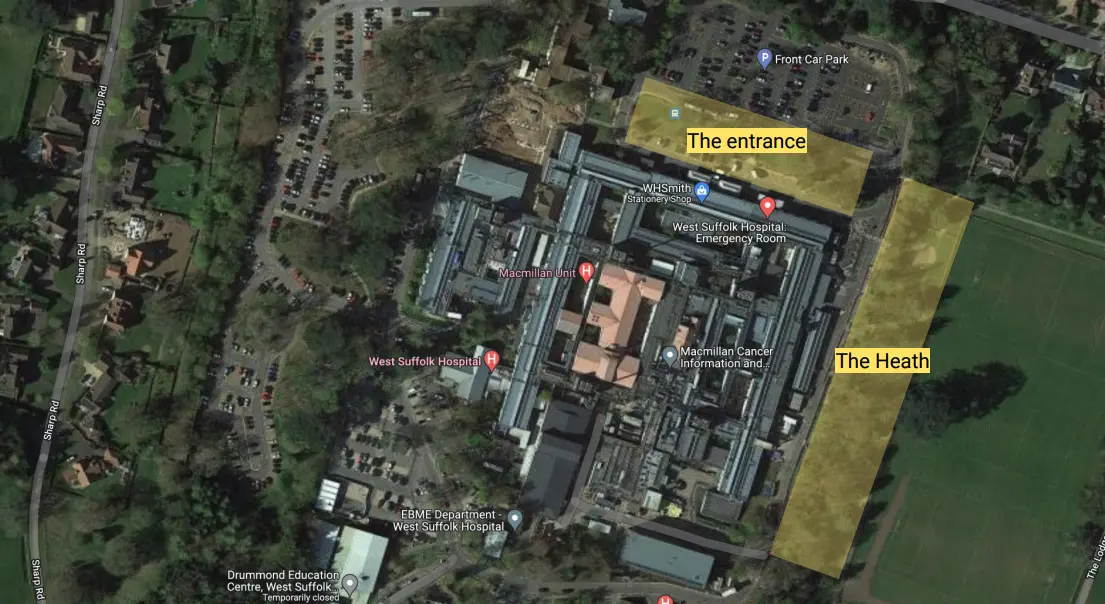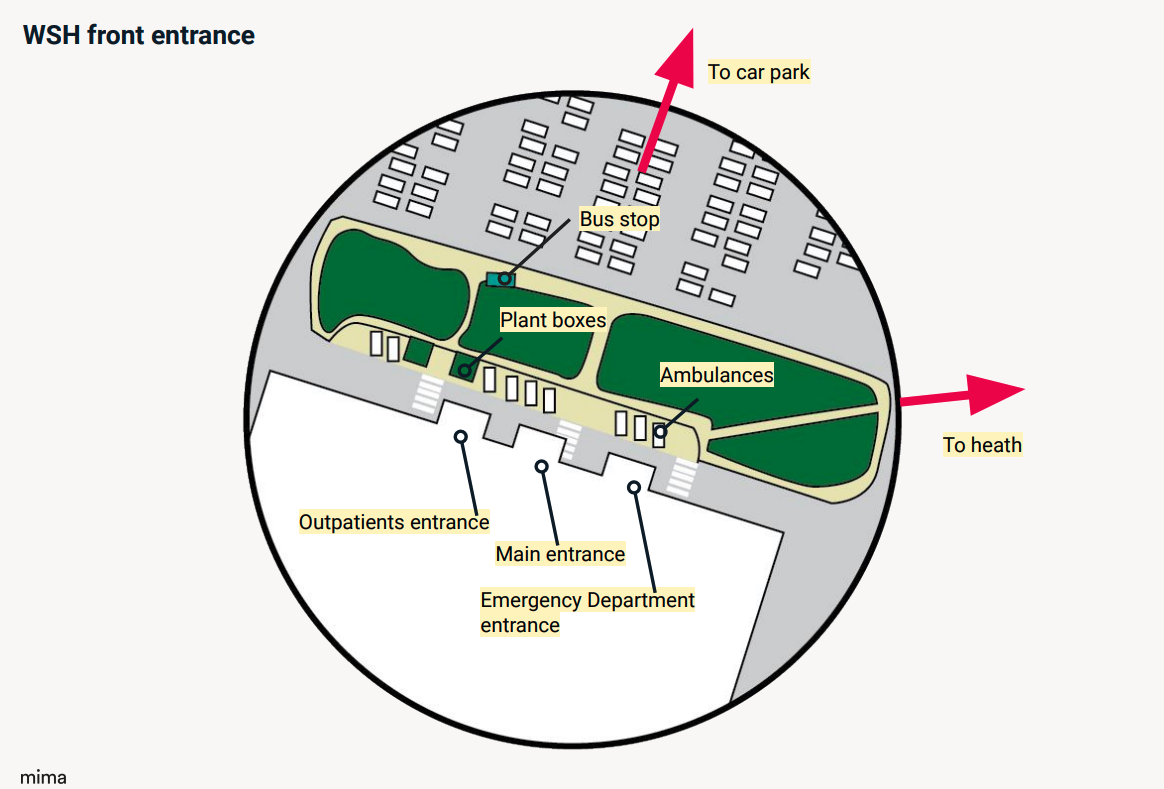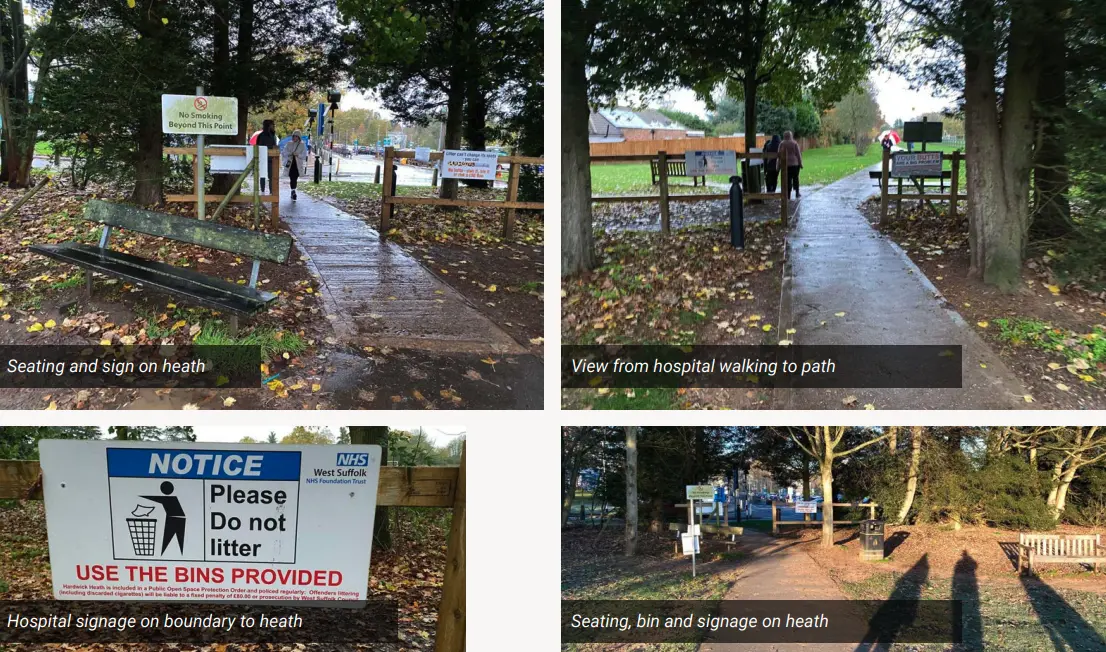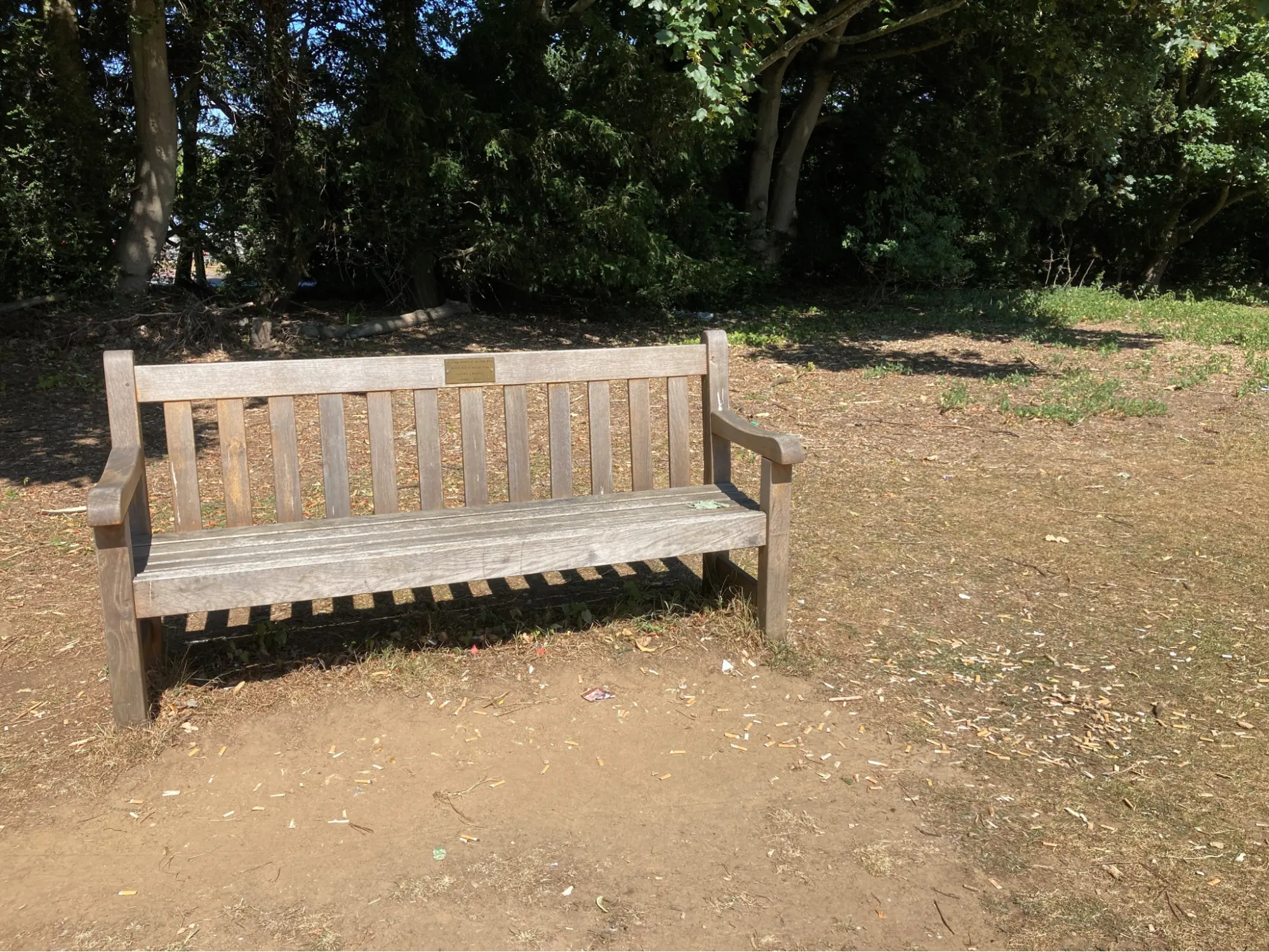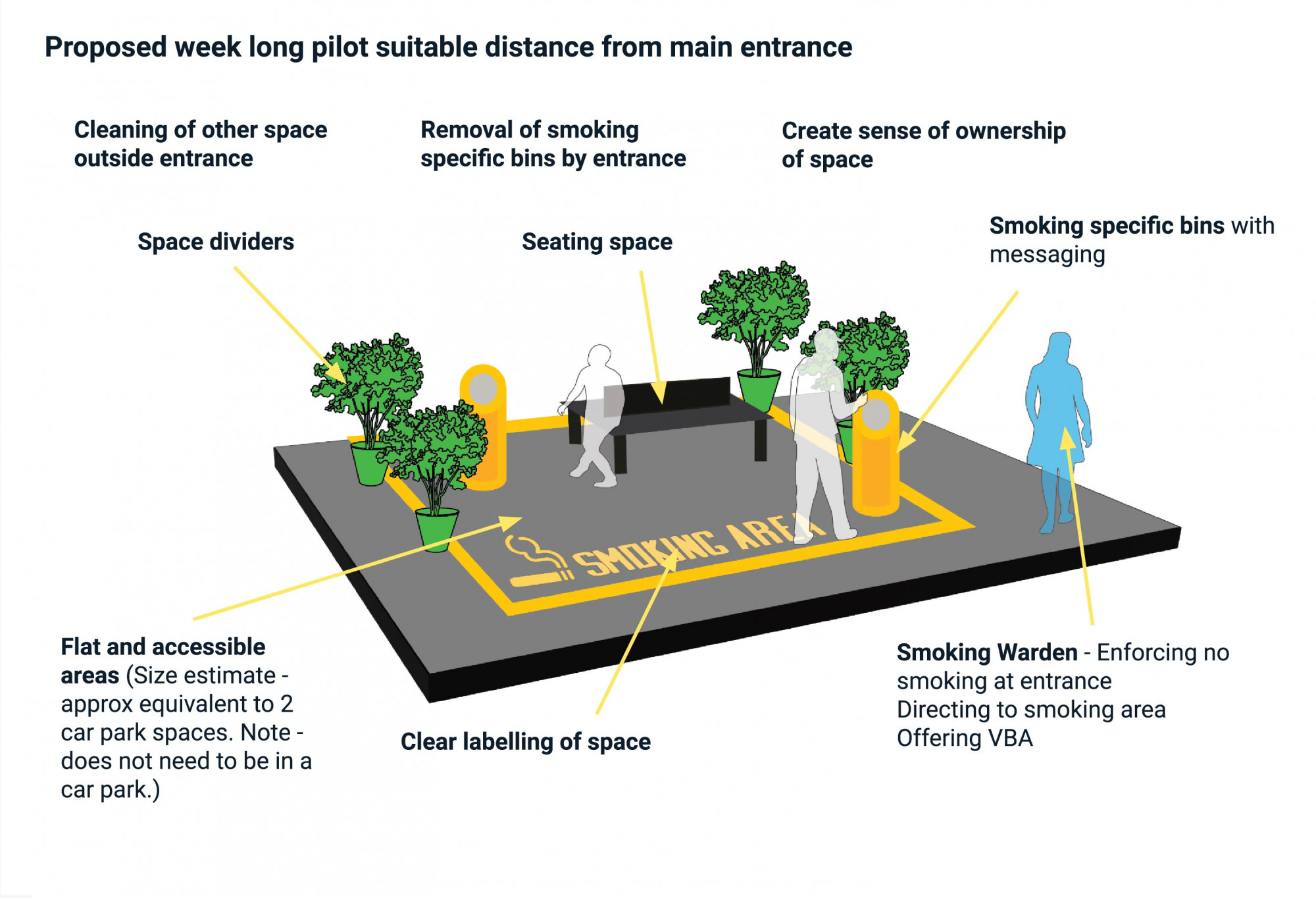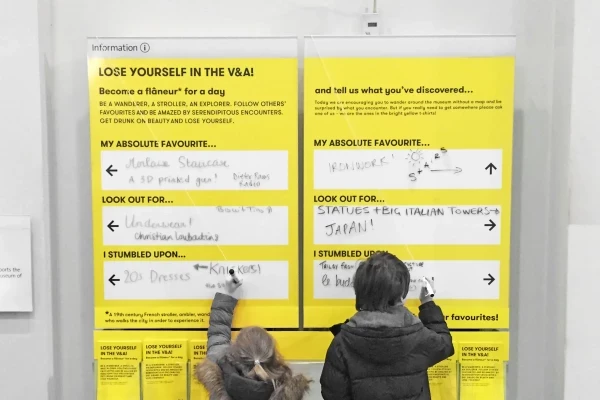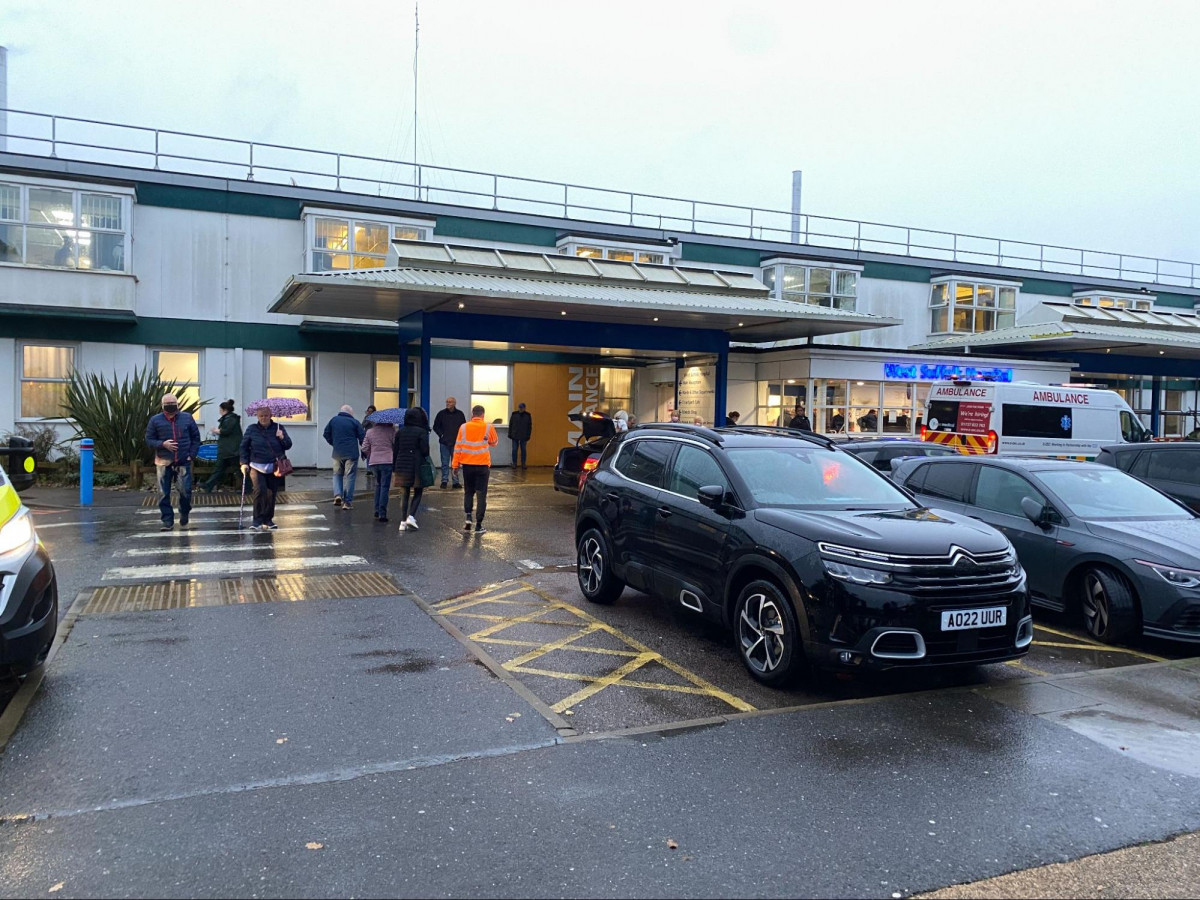
West Suffolk Hospital
Shifting Smoking Behaviours with West Suffolk Hospital Trust
Mima worked with West Suffolk Hospital on a Behaviour Change project to take on the challenge of shifting smoking behaviours across the hospital site.
The hospital in Bury St Edmunds enjoys a campus setting, neighboured by a large leafy heath, managed by the local council. The site deploys the NHS “Smokefree” policy with no smoking or vaping allowed anywhere within the boundary. However, there is widespread confusion and 'bending' of the rules with smoking occuring across the site - particularly outside the hospital main entrance, with the negative consequence of second hand smoke for non-smokers. The hospital also raised the problematic issue of smoking-related litter across the sites at the sides of the boundary to the Heath, despite signage indicating the policy.
Our Task
The project consisted of 3 main phases; a problem definition phase, a research phase and a policy and intervention design phase.
Problem definition
We facilitated stakeholder workshops utilising Mima’s service design toolset to define the problem statement, identify the research focus and outline project parameters plus any known redlines.
Working with the hospital team, we identified the key outcomes:
Protect non-smoking staff, patients and visitors from second-hand smoke
Reduce the prevalence of visitor/patient smoking or vaping at the hospital entrances
Reduce smoking-related litter
Research
Mima consultants performed targeted research:
On-site ethnographic research - with interview intercepts with visitors, patients and staff across the hospital site - recording attitudes, understanding, motivations and opinions on smoking, vaping and littering.
Direct observation - observing smoking, vaping and associated littering first-hand - identifying behavioural cues and patterns.
Environmental Context - Identifying site-specific contextual factors that were cues to smoking, vaping and smoking-related littering behavior.
Alongside onsite activities, we performed in-depth desk research to mine for supporting knowledge, evidence and parallel studies in similar fields. We found that many hospital settings suffer similar issues with smoking and vaping rule-breaking. The design of interventions can effect the chances of success in changing smoking behaviours or littering behaviours.
Policy and Intervention Design
The Mima team analysed the research findings and then ran Service Design-led workshops with key stakeholders to explore the art of the possible and understand barriers and boundaries. We played back the insights to the hospital's smoking policy working group utlising a Walk + Talk method - we took the workshop out around the site to visit key smoking and littering sites, bringing context to the issues, gaps and opportunities we had identified. We then workshopped some key smoking policy options and identified what it might look like to implement them.
The Mima team used the ‘EAST’ behaviour change framework to develop interventions that target key moments and decision points within individual smoking and littering behaviours with an aim to create meaningful and lasting behaviour change.

Our Solution
We targeted efforts to “reclaim the entrance” for non-smokers and protect their right to clean air. We built a set of multi-faceted recommendations utilising the EAST behaviour change framework -
1) To influence the decision to light up and smoke near the entrance.
2) To intervene at the moment smokers finish a cigarette to responsibly dispose of the butt in a bin.
Our smoking change recommendations aimed to shift the social norm of smoking at the entrance, removing obvious smoking cues in the environment and increasing the friction cost. We worked to provide various ways of communicating a clear message to move people away from the entrance to where smoking is permitted - resetting the default.
With littering - we provided recommendations around the location, design, attractiveness and cleanliness of smoking bins to maximise uptake of use - we found that it was important to minimise the friction to use, removing barriers, alongside implementing communication campaigns to increase awareness of the personal impact of smoking-related littering on the local environment. Lastly, we worked with the hospital on the concept of creating a 'smoking warden' role during the initial launch of interventions to shepherd the change, advising smokers of changes (and why - framing the impact on the vulnerable) and pointing to where they could move to and how smokers could access support to quit. Alongside this - there were a raft of measures recommended for inpatients and staff to educate, inform and support quitting.
The West Suffolk Hospital was able to take these recommendations into more robust feasibility discussions, identifying the barriers and benefits of policy change and specific interventions to deliver behaviour change at the West Suffolk Hospital site.
The next step for West Suffolk Hospital is to build a business case off the back of recommendations and look to trail a combined strategy to create change at the hospital entrance. We look forward to supporting the hospital team and sharing updates on successes and challenges in this important area of behaviour change.
